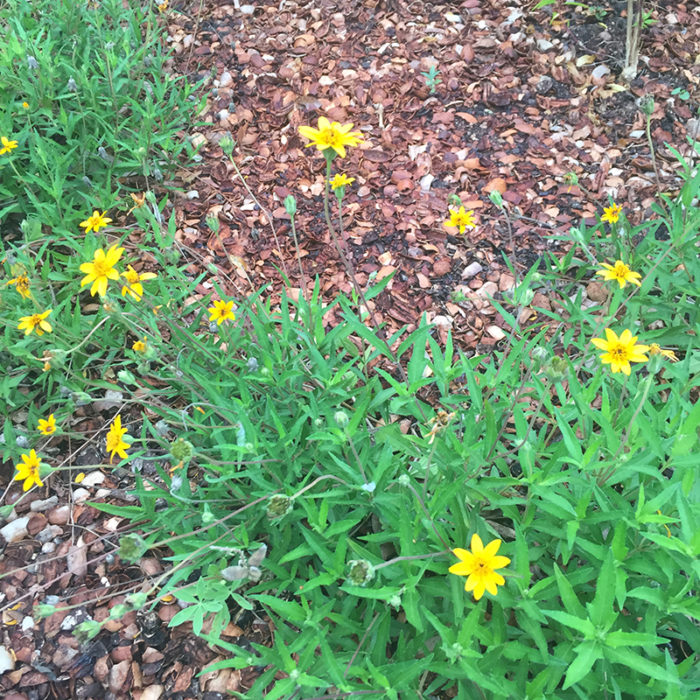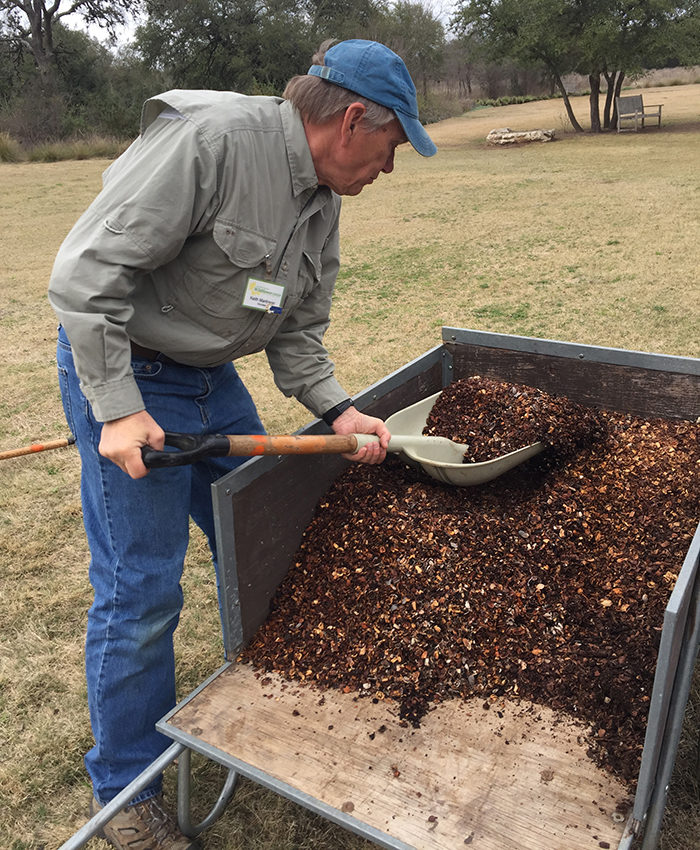
Most gardeners are familiar with the major benefits of mulch: conservation of water, cooler soil temperatures, and a reduction in weeds. The first two benefits are especially important in areas like the Southern Plains, where we have to mitigate the effects of our hot, dry summers.
Many materials are suitable for use as mulch, and they can be divided into two main groups: organic mulches, which break down and add nutrients to the garden over time, and inorganic mulches, which don’t break down and therefore don’t add to soil fertility. Inorganic mulches such as pea gravel and decomposed granite are generally used in xeric gardens or rock gardens. Organic mulches include a variety of shredded wood types such as bark mulch, pine needles, leaf mold, rice hulls, straw, and even old hay. There is, however, a less common type of organic mulch with many advantages: pecan shell mulch.

The pecan tree (Carya illinoinensis, Zones 5–9) has a native distribution from Texas up through Oklahoma and to some areas further east and northeast. Pecans serve as a major commercial crop in the United States. The pecan shell is a useful by-product of the pecan nut industry, and many mulch distributors in Texas and Oklahoma now carry pecan shell mulch for use in the garden. I have worked extensively with pecan shell mulch in ornamental gardens and have been impressed with its beauty and functionality.
The color of pecan shell mulch ranges from reddish-brown to dark brown depending on the particular variety of pecan and on the age of the mulch. The more reddish varieties, while not my favorites, may appeal to gardeners who like the reddish color but don’t want to use dyed mulch. All pecan mulches tend to darken with time and exposure to the elements. Shell size varies according to pecan variety, and different suppliers will grind the shells to varying degrees. The pecan mulch I use regularly is not ground down very much, so it’s rather large and fluffy.

Pecan shell mulch is lighter in weight than many other mulches, including the shredded hardwood and cedar mulches common in this area, making it easier to move by wheelbarrow. From the wheelbarrow, I sprinkle it on my garden beds with a plastic bulk shovel or a large dust pan. There is no need to use a manure fork because it isn’t long and fibrous like straw. In addition, it doesn’t tend to wash away any more readily during rain than the shredded mulches. Pecan shells don’t mat up and make a soggy mess the same way straw, hay, and even shredded wood mulches sometimes do. This mulch will sometimes form a hard crust, however, as fungal mats develop as part of the natural decomposition process. This can be avoided by periodically fluffing or cultivating the mulched area with a hoe or rake. If crusts do develop, it is easy to pick them up and throw them out.
In addition to performing well, pecan shell mulch provides a satisfying crunch underfoot in the garden, and I get many compliments from visitors who have never seen it used in a garden before. An attractive and high-performing alternative to the more commonly used mulches, it’s worth a try in your garden.
Karen Beaty is a horticulturalist at the Lady Bird Johnson Wildflower Center in Austin, Texas.


















Comments
Log in or create an account to post a comment.
Sign up Log in